Kingdom Animalia Order Anura Genus Pipa Higher classification Pipinae | Phylum Chordata Family Pipidae Scientific name Pipa pipa Rank Species | |
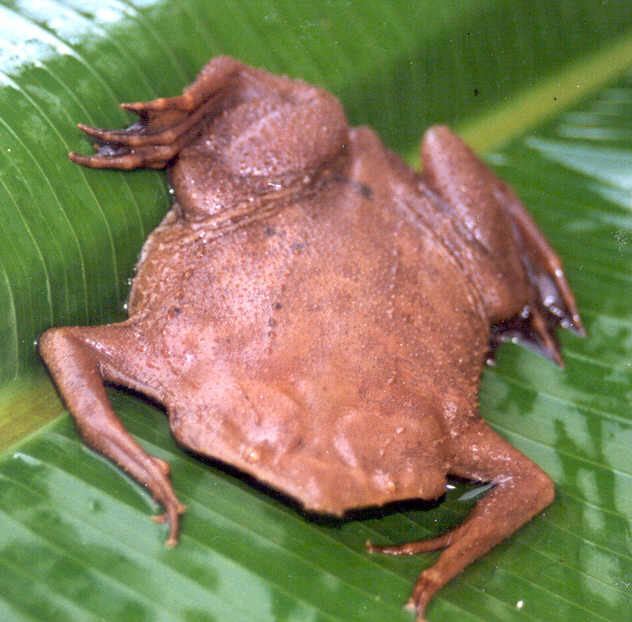 | ||
Lower classifications Carvalho's Surinam toad, Myers' Surinam toad, Arrabal's Suriname toad, Pipa snethlageae, Pipa aspera | ||
The common Suriname toad or star-fingered toad (Pipa pipa) is a species of frog in the Pipidae family found in Bolivia, Brazil, Colombia, Ecuador, French Guiana, Guyana, Peru, Suriname, Trinidad and Tobago, and Venezuela. In Spanish it is called aparo, rana comun de celdillas, rana tablacha, sapo chinelo, sapo chola, or sapo de celdas. In Portuguese, it is known as sapo pipa due to its shape, as "pipa" means kite. Its natural habitats are subtropical or tropical moist lowland forests, subtropical or tropical swamps, swamps, freshwater marshes, and intermittent freshwater marshes. It is threatened by habitat loss.
Contents
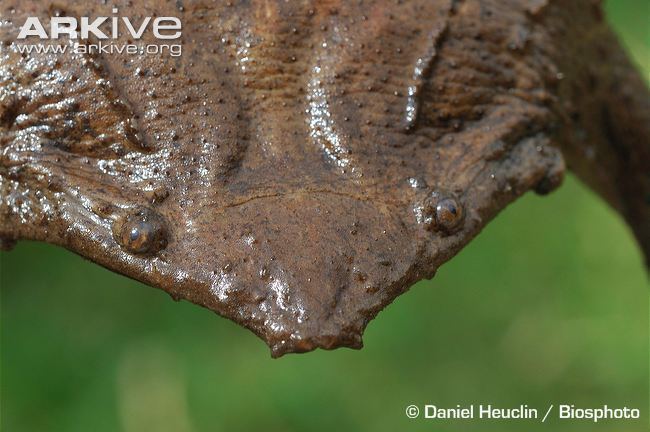
Description
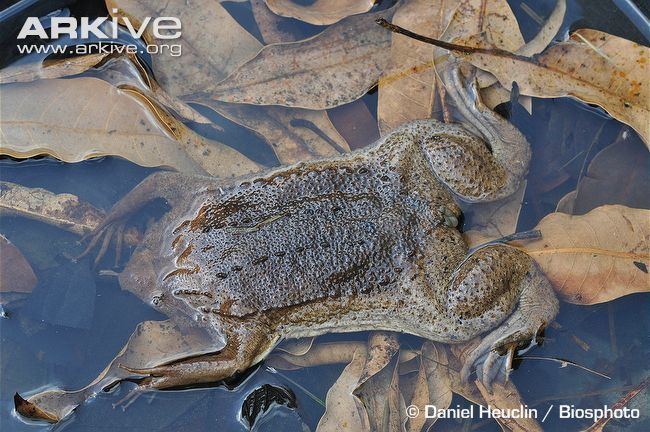
The common Suriname toad is similar in appearance to a mottled brown leaf, and is almost completely flat. Its feet are broadly webbed with the front toes having small, star-like appendages. Specimens of close to 20 cm (8 in) in length have been recorded, although 10–13 cm (4–5 in) is a typical size. The Suriname toad has minute eyes, no teeth, and no tongue.
Reproduction
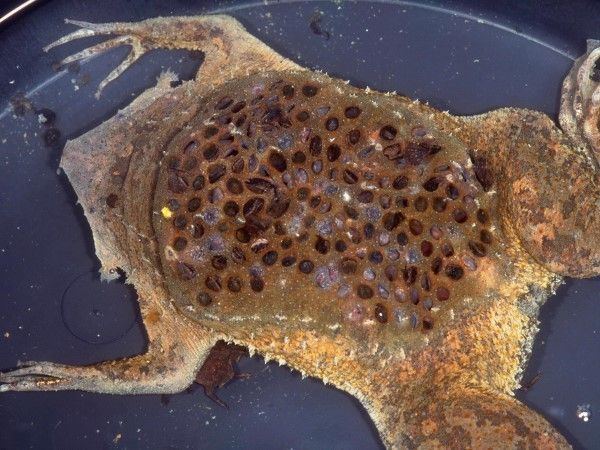
Suriname toads are best known for their remarkable reproductive habits. Unlike the majority of toads, the males of this species do not attract mates with croaks and other sounds often associated with these aquatic animals. Instead, they produce a sharp clicking sound by snapping the hyoid bone in their throats. The partners rise from the floor while in amplexus and flip through the water in arcs. During each arc, the female releases 3 to 10 eggs, which get embedded in the skin on her back by the male's movements. After implantation, the eggs sink into the skin and form pockets over a period of several days, eventually taking on the appearance of an irregular honeycomb. The larvae develop through to the tadpole stage inside these pockets, eventually emerging from the mother's back as fully developed toads, though they are less than an inch long (2 cm). Once they have emerged from their mother's back, the toads begin a largely solitary life.
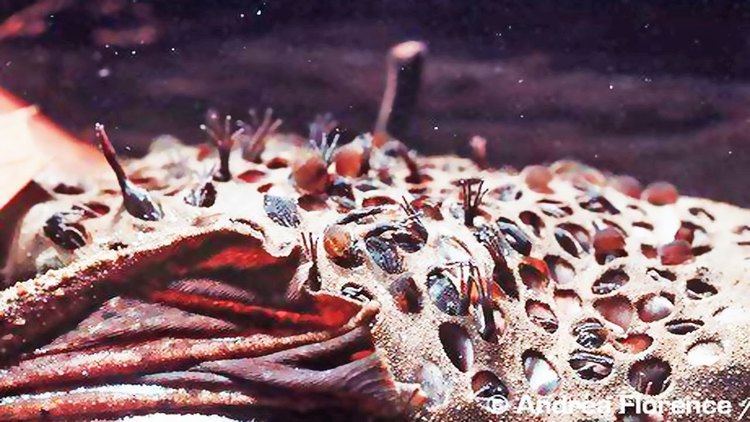
After giving birth to the new toads, the mother slowly sheds the thin layer of skin that was used to birth them, and can begin the cycle again.
